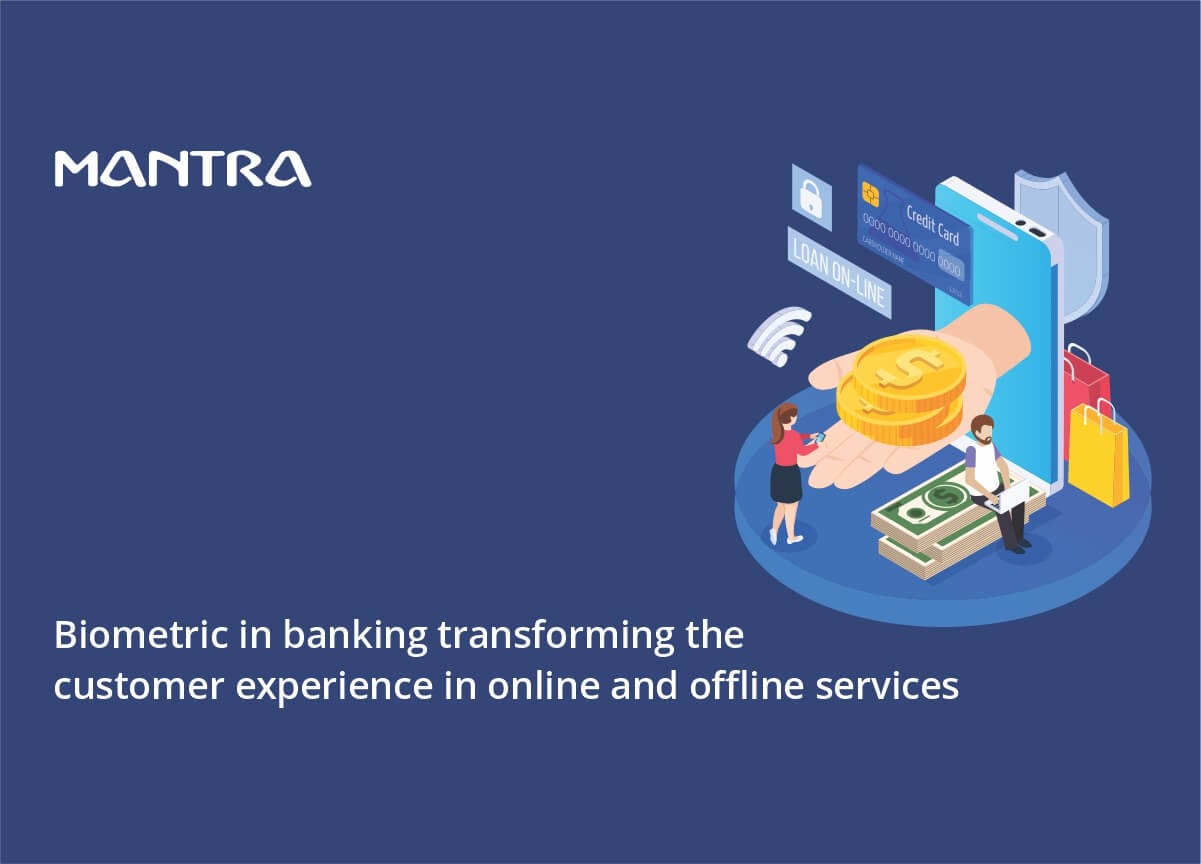
Key market points
The biometric market in the BSFI sector is booming. It was estimated at $4.4 billion in 2020 and is projected to reach $8.9 billion by 2026, growing at 12.8% CAGR.
The fingerprint biometric will grow at a 13.4% CAGR to reach US$6.2 Billion by the same period.
Facial recognition use in the BSFI sector has been increasing recently. Now it holds 22.8% of the total market share of biometrics for the banking sector. And it is expected to grow at an 11.6% CAGR in 2020–2026.
Introduction
We are currently in the era of digital banking. The growths till the ATM money transactions are considered the pre-digital era, and the digital era began with the E-banking services, email contact centre, database, etc. Digital banking now offers 360° banking service through web-based account organization, digital wallets, mobile banking, etc.
Today, digital banking combines with the Internet of Things and artificial intelligence to enable effective cross-channel collaboration. As technology evolves, security breaches get more sophisticated, making it more difficult for banks and financial institutions to protect themselves. Money laundering has become more frequent, accounting for between 2% and 5% of global GDP. In such a scenario, traditional passwords and PINs are inadequate to provide account security for banking customers. This is where biometric authentication, the most accurate and precise authentication technique, becomes relevant. In reality, it is not just an authentication method, biometric in the banking sector is transforming customer experience for banking services. Let's see how it is happening.
A brief on biometric technology in the banking sector
Biometric technology such as fingerprint, face recognition, and voice recognition has become immensely popular among smartphones and laptops. The banking sector is leveraging this system for open banking services. It has also been utilized for security and offline transactions.
Leaving passwords behind
According to a survey conducted during the pandemic in the UK, 3 out of 5 people believes biometrics is secure and more convenient than password. As such, biometric technology is widely seen as the future of online authentication. Biometrics modalities such as fingerprint and facial recognition have already replaced passwords (Must read: Biometrics replacing passwords in banking) for financial transactions via web apps and digital wallets. Customers can still hold onto their passwords alongside biometrics called multifactoral authentication.
The same system is used for offline services directly with banks and ATMs. For any services from branches, including transactions, loan approvals, and wallet authentications, banks use biometrics to ensure that they are giving access to the right person.
Moving away from magnetic stripe payment cards
A payment card (credit/debit) currently employs a magnetic stripe identification, and users have to enter a password along with it to carry out the transaction. MasterCard and VISA cards introduced magnetic stripeless biometric payment cards to the market. These biometric cards are considered the future of contactless payment security. Customers have to tap the card on the POS device, and cardholder authentication is done with the fingerprint scanner on the card. The card allows the transaction only if the cardholder's fingerprint is placed on the scanner. The biometric card offers the convenience of contactless payment alongside high security.
Banks are coming to you: better financial inclusion.
In India, with the help of the Aadhaar biometric identity, they have developed an Aadhaar enabled payment system (AEPS) which only requires a customer's bank account number and biometrics (iris or fingerprint) to carry out transactions. Bank agents can reach their remote customers with a biometric POS device in which customers have to authenticate with biometrics and account numbers for any transactions or KYC updates.
The government of India is leveraging this system for the disbursement of subsidies and employee wages. Many countries are on the verge of developing electronic biometric IDs that will help their citizens to take advantage of government-led schemes, including financial aid.
Conclusion
Banking is one of the major sectors where the biometric market is skyrocketing. It can balance between convenience, security, and finally, financial inclusion. From the customer's perspective, they can avoid remembering multiple passwords to operate multiple accounts. It also enables them to operate their account from any device at any time.
Mantra is one of the top brands that provide biometric device solutions for the banking and financial sector. Contact us at: sales@mantratec.com.
Comments